 
|
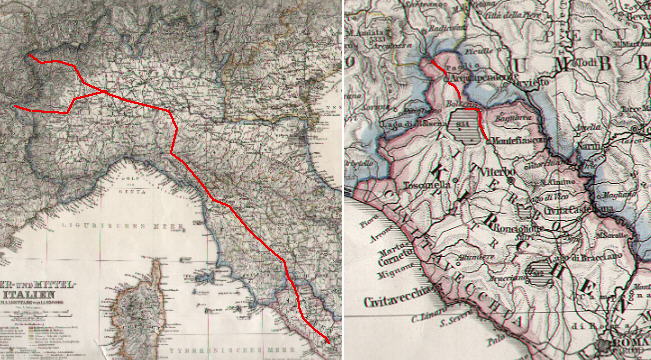 | ||
Pilgrims coming from France usually crossed the Alps through the passes of Grand Saint Bernard and of Mont Cenis.
They then moved through the Po Valley stopping in Aosta (or Turin), Pavia, Piacenza and they crossed the Appennines at the Cisa Pass. Once in Tuscany they avoided the unhealthy route along the sea and reached Rome via Lucca, Siena
and Viterbo. The road was called Via Francigena as it originated in France. The section between Siena and Rome followed the ancient
Roman road called Via Cassia which ended very near Ponte Milvio.
The layout of Via Cassia has been modified at several points to adapt it to modern traffic needs. In general the ancient Romans had a liking for straight roads even though that
meant very steep gradients: these have been modified by more winding tracings. The municipalities of the towns of Acquapendente and
Bolsena (located at the border between Latium and Tuscany) have restored (for pedestrians only) the old Via Cassia where it diverges from the
current one. "Via Francigena" walks have become very popular among the residents and the many foreigners who live in the area.
The (German) map shows Italy as it was partitioned in 1864 and the detail highlights the border between the Papal State and the Kingdom of Italy.
Acquapendente
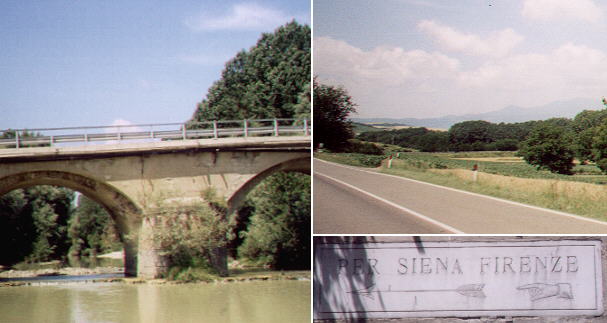 | ||
Acquapendente is named after its many little cascades flowing towards a small river (R. Paglia) which marks the natural boundary between Latium and Tuscany, although the border was set a few miles to the north of the river. The town was for some time a possession of Siena, although formally it had been bequeathed to the Church by Countess Matilde of Tuscany in the XIIth century. It returned to the Church in the XVIth century and Pope Gregorius XIII built a bridge over the river: the pillars of the bridge are still those erected by the architect Domenico Fontana. From the valley of the Paglia one can see in the distance Mount Amiata, the highest mountain (5,689 ft.) of southern Tuscany.
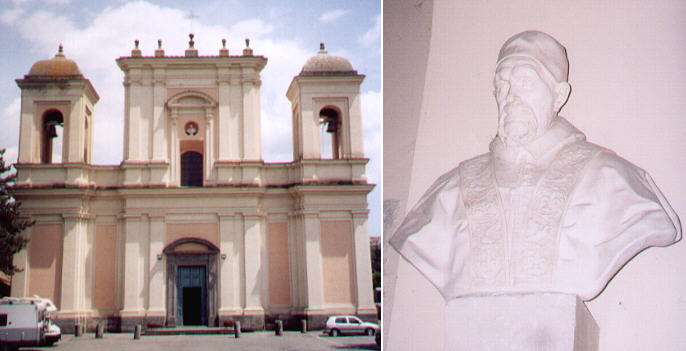 | ||
The fortunes of Acquapendente took a favourable turn as a consequence of the War of Castro by which Pope Innocentius X in 1649 put an end to the rule of the Farnese family over part of northern Latium. His army destroyed the town of Castro and the pope transferred to Acquapendente the see of the bishop of Castro. This meant an increase in the importance of Acquapendente because in the State of the Church religious and civil structures were combined. That explains why the pope commissioned Alessandro Algardi with the task of making his bust and had it sent to Acquapendente. It is kept in the Cathedral of the town, a very large building erected on an old shrine which contains a stone, marked with blood, which came from the Holy Sepulchre in Jerusalem.
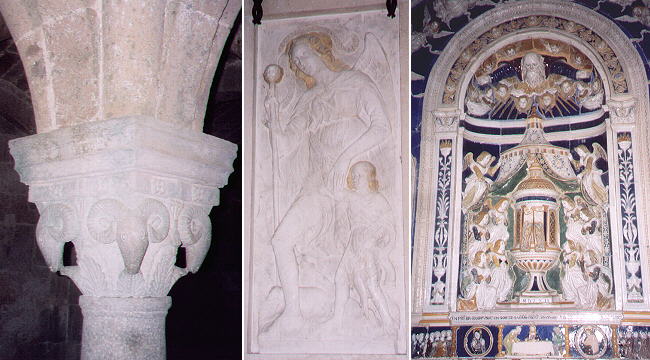 | ||
The cathedral contains a very interesting Gothic crypt built above the chamber containing the relic. It was embellished through the centuries with several works of art in particular (due to the influence of neighbouring Tuscany) painted terracottas. The image on the background of this page shows a detail of a terracotta altar.
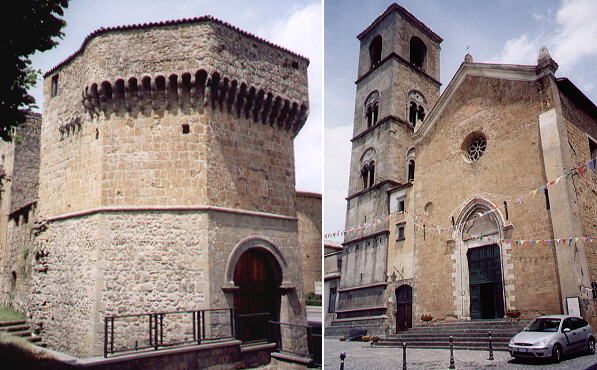 | ||
Acquapendente was protected by medieval walls which unfortunately were to a large extent pulled down to favour its modern expansion. One of the main towers however was spared and restored.
S. Francesco is a church which pre-dates the saint to which it is dedicated. The bell tower next to it is a Renaissance addition, but the portal goes back to the XIth century.
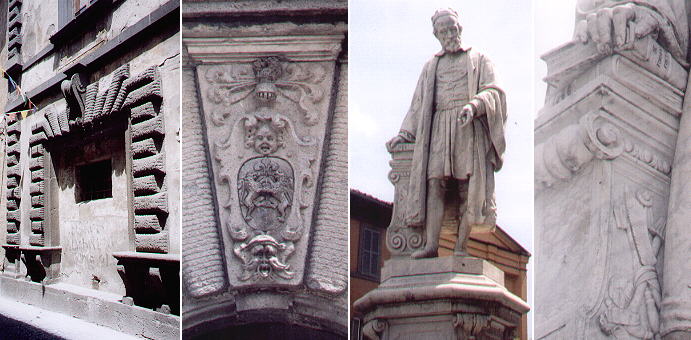 | ||
The influence of Tuscan artists is evident in the bugnato decoration of Palazzo Viscontini, a fine Renaissance palace with unusually large windows.
In most of the main squares of Italian towns there is a statue dedicated either to King Victor Emmanuel II or to Giuseppe Garibaldi, who both played a key role in the making of Italy in the XIXth century. Acquapendente is an exception, because the municipality in 1888 chose to celebrate with a monument in the main square the anatomist and surgeon Girolamo Fabrici or Fabrizio, born in Acquapendente in 1535. He is known for his studies on the development of foeti, on the functioning of vein valves and for his anatomical descriptions (De Formatio Foetu, De Venarum Ostiolis and Opera Chirurgica). The monument shows these books and the lancets he used.
Move on to Bolsena.
A Pilgrims' Way - Via Francigena - other pages:
Bolsena
Montefiascone
some other walks:
Walks with Ferdinand Gregorovius in the Roman countryside
In and about Viterbo
From Civitavecchia to Civita Castellana
From Bracciano to Viterbo
Around Monte Cimino
On the Edge of the Marsh
In Maremma
Anticoli Corrado where the painters found their models
A walk to Porta Furba
Via Appia Antica from Cecilia Metella to Torre in Selci
Via Appia Antica from Torre in Selci to Frattocchie
A Walk to Ponte di Nona
Branching off Via Cassia: S. Maria di Galeria, Isola Farnese and Formello
A Walk to Malborghetto
See my Home Page on Baroque Rome or my Home Page on Rome in the footsteps of an XVIIIth century traveller
All images © 1999 - 2003 by Roberto Piperno. Write to romapip@quipo.it
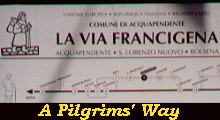 Via Francigena
Via Francigena